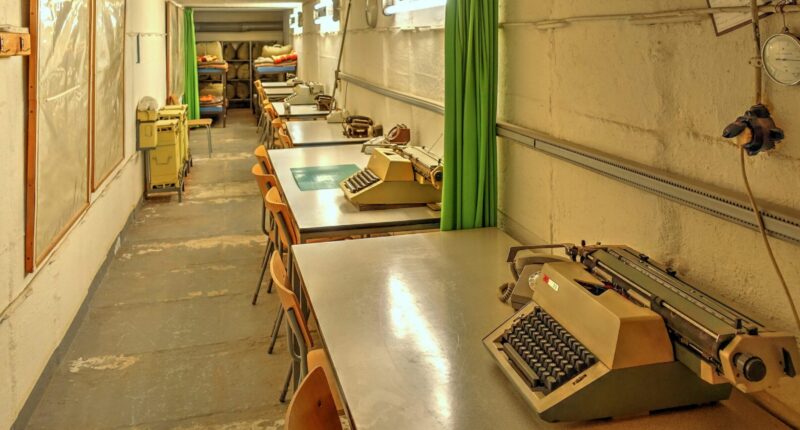WE ARE 100% INDEPENDENT AND READER-FUNDED. FOR A GUARANTEED AD-FREE EXPERIENCE AND TO SUPPORT REAL NEWS, PLEASE SIGN UP HERE, TODAY.
PULSE POINTS
❓WHAT HAPPENED: Fears of an attack from Russia are prompting Germany to look urgently at replacing air-raid bunkers after shutting down nearly all of its Cold War-era facilities.
👤WHO WAS INVOLVED: German government, German military (Bundeswehr), Norbert Gebbeken of the University of the Bundeswehr, and Russia.
📍WHEN & WHERE: A report on Germany’s desire for new air raid shelters was published on July 20.
💬KEY QUOTE: “When I ask my friends what their stockpiling situation is… the usual joke is that they have enough red wine to last for a year.” – Tim Stuchtey of the Brandenburg Institute for Society and Security
🎯IMPACT: Germany is looking to prepare for what the country’s leadership seems to believe is an inevitable conflict with Russia.
IN FULL
Less than two decades after decommissioning its last air-raid bunkers, Germany is reversing course amid rising fears of a Russian attack. Of the 2,000 bunkers operational during the Cold War, only 580 remain—covering just 480,000 people, or 0.5 percent of the population. Many of those are mostly unusable.
“Maintenance and servicing of civil protection equipment is no longer taking place,” a government spokesman said. The remaining shelters, including those in the capital of Berlin, are “neither functional nor operational.”
Spurred by Russia’s 2022 invasion of Ukraine, Germany has pledged to become “war-ready” by 2029, with military spending set to nearly double. “When I ask my friends what their stockpiling situation is… the usual joke is that they have enough red wine to last for a year,” said Tim Stuchtey of the Brandenburg Institute for Society and Security. “But it’s not enough for the Bundeswehr [military] to be ready. So must the whole of society.”
A 2024 classified plan, Operation Plan Germany, outlines infrastructure protection and NATO troop movement, with bunkers as a key component. “The government must define what it considers the threat to be. And secondly, what should be protected,” said Norbert Gebbeken of the University of the Bundeswehr, Germany’s armed forces. “Neither of these questions has been answered yet.”
Rather than rebuilding vast Cold War bunkers, authorities are identifying basements, garages, and subway stations that can be rapidly reinforced. “The idea is to use existing spaces and reinforce them,” said Gebbeken. “They aren’t entirely improvised. This is what we know from Israel and other places.”
Germany plans to shelter a million civilians by the end of 2026 and scale up. A mobile app is also in development to guide citizens to the nearest shelter and convert private rooms. “By signaling that we are… able and willing to defend our values, we contribute to our deterrent,” said Stuchtey. “We’re basically telling Russia: Don’t even think about it.”
While Germany looks to rearm and become one of the most powerful militaries in Europe, the country has been plagued by equipment shortages and a population that has a largely unfavorable view of service in the armed forces. A 2024 poll showed that less than a third of Germans, 32 percent, were willing to join the armed forces if Germany were attacked by a foreign adversary. A massive 57 percent said they would refuse to serve.
Image by RogerOver.
Join Pulse+ to comment below, and receive exclusive e-mail analyses.








